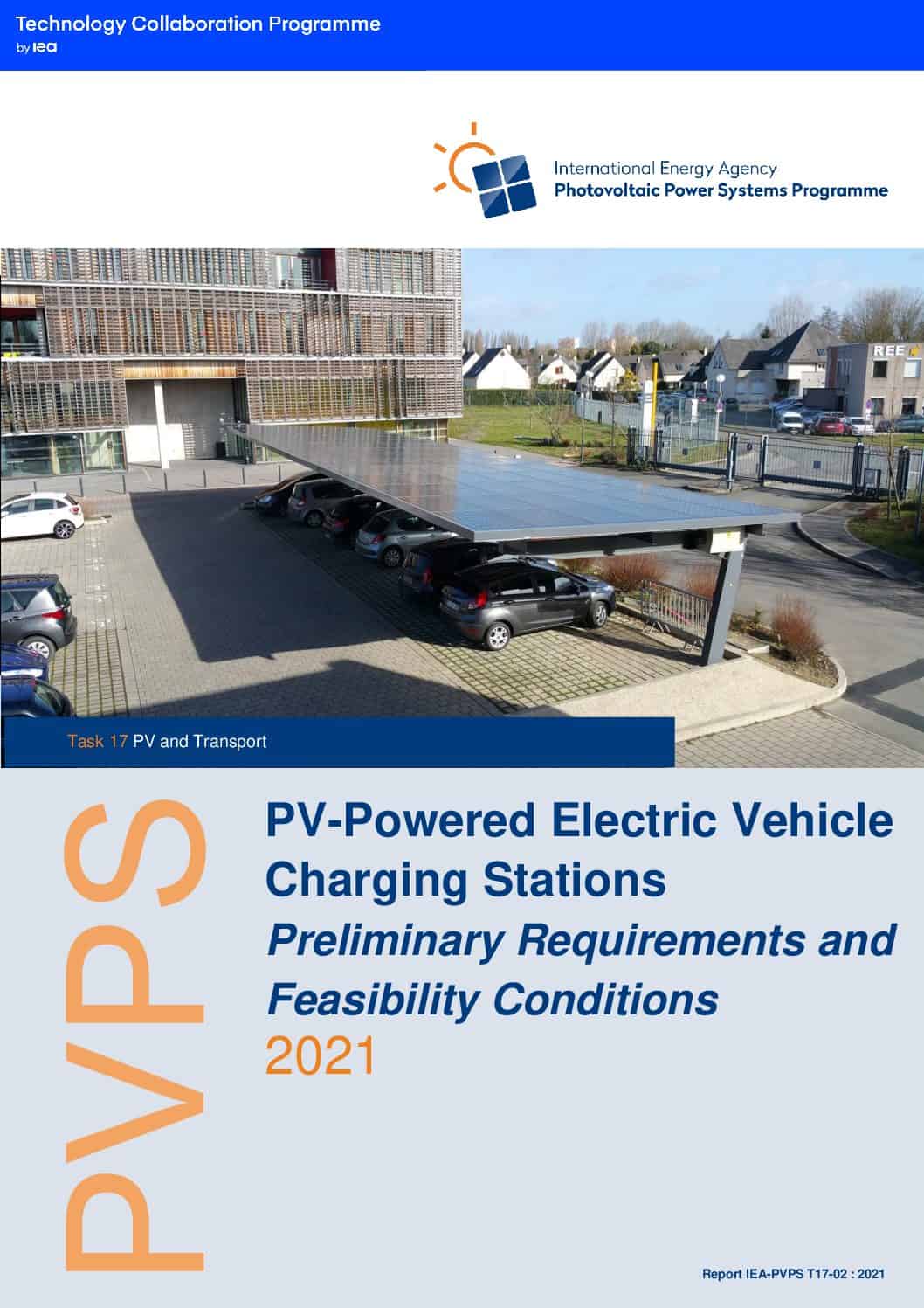The advent of electromobility is widely seen as an opportunity to reduce the harmful impacts of the transport sector on the environment and public health. A substantial reduction in CO2 emissions from EV usage can be achieved by the development of solutions based on photovoltaic (PV) systems as a primary energy source. IEA PVPS Task 17 is aiming to clarify the potential of the utilization of PV in transport and to propose how to proceed towards realizing the concepts. Task 17’s scope includes PV-powered vehicles as well as PV charging infrastructures.
This report focuses on PV-powered charging stations (PVCS), which can operate for slow charging as well as for fast charging and with / without less dependency on the electricity grid. PVCS can also provide additional services via vehicle-to-grid (V2G) and vehicle-to-home (V2H). These may increase the effective use of locally produced solar power. This is the first technical report of subtask 2 of the Task 17. As an interim report, it presents the recent trends in PVCS for passenger cars including system architectures, preliminary requirements and feasibility conditions to increase benefits of PVCS, social acceptance, and proposes steps for realizing PVCS.
Key recommendations
- Main requirements and feasibility conditions for increasing PV benefits are:
- On user behavior/ flexibility:
- Prefer daily charging over weekly charging;
- Accept long and slow charging when possible;
- Limit charging to the number of kWh required for the daily trip, or charge more when PV power is available;
- On technical aspects:
- Limit charging power and stationary storage power to about 7 kW;
- Choose an optimal size for stationary storage;
- Give priority to charging stationary batteries by PV over charging from the grid.
- Charge / discharge controlling, optimization, PV production forecasting, and communication between the operators and the end-users are necessary to increase PV benefits;
- Technical and economic optimization of PVCS under local meta-conditions (site, weather conditions, user profile, etc.) and over the lifespan are strongly recommended to make full direct use of the PV energy;
- Well-conceived power management strategies with integrated V2G / V2H may reduce the peak pressure on the public grid while meeting the needs of users, and provide an environmental benefit;
- Societal impact and social acceptance, as well as aesthetic design aspects, of PVCS and new services associated have to be considered and undertaken as preliminary studies;
- Design methodologies and tools will be helpful for optimally sizing PVCS.
- On user behavior/ flexibility:
